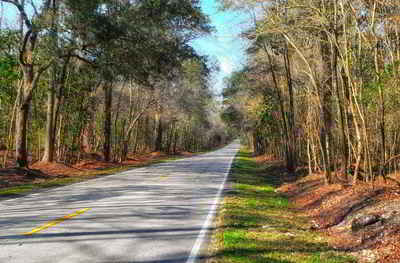South Carolina Counties
South Carolina is made up of fourty-six counties. They range in size from 392 square miles (1,016 square kilometers) in the case of Calhoun County to 1,358 square miles (3,517 square kilometers) in the case of Charleston County. The least populous county is McCormick County, with only 9,958 residents, while the most populous county is Greenville County, with a population of 395,357, despite the state's most populous city, Columbia, being located in Richland County.Oconee County, South Carolina
Oconee County Education, Geography, and History

Oconee County is the westernmost county in the state of South Carolina. Based on the 2010 census, the population was 74,273. Its county seat
is Walhalla.
Oconee County is included in the Seneca, SC Micropolitan Statistical Area, which is also included in the Greenville-Spartanburg-Anderson, SC
Combined Statistical Area.
Etymology - Origin of Oconee County Name
The name Oconee is generally believed to be derived from a Hitichi (Creek) word meaning "land of springs". When
the county was first formed, the name was picked up from the Yuchi Tribe (Creek) which was prevalent around Anderson
and Pendleton, the seat of the district government. An alternative theory holds that the name and meaning came from
the Cherokee language.
Demographics:
County QuickFacts: CensusBureau Quick Facts
Oconee County History
Oconee County, which was formed in 1868 from Pickens County, takes its name from an Indian word. This area in the northwest corner of the state on the edge of the Blue Ridge Mountains was home to several Indian tribes, including the Creeks and the Cherokees, but the Indians gave up their lands in treaties signed in 1777 and 1785. After the American Revolution, settlers from other parts of the state began moving in, including the Germans from Charleston who founded the town of Walhalla in 1850. In 1856 work began on a tunnel for the Blue Ridge Railroad that would have linked Charleston with Knoxville, Tennessee, but the Civil War ended that project; the unfinished Stumphouse Tunnel can still be seen today. Several Revolutionary War heroes moved to present day Oconee County after the war, including Andrew Pickens (1739-1817), Robert Anderson (1741-1813), and Benjamin Cleveland (1738-1806).
Geography: Land and Water
As reported by the Census Bureau, the county has a total area of 674 square miles (1,745 km2), of which, 625
square miles (1,620 km2) of it is land and 48 square miles (125 km2) of it (7.15%) is water. The hilly landscape has
created a haven for man-made lakes. Three large man-made lakes provide residents with sport fishing, water skiing,
and sailing as well as hydroelectric power. The largest lake is Lake Hartwell, built by the US Army Corps of
Engineers between 1955 and 1963. Lake Keowee is the second largest lake and the Oconee Nuclear Station operates by
the lake. Lake Jocassee is the third largest and is a source of hydroelectric energy, but is also popular for its
breathtaking scenery and numerous waterfalls. Bad Creek Reservoir, located in the mountains above Jocassee, is for
generating electricity during peak hours. The water level can fall by tens of feet per hour and during off-peak
times water is pumped back into the lake for the next peak period. Because of this, boating and swimming are
prohibited in the reservoir.
Neighboring Counties
Bordering counties are as follows:
- Jackson County, North Carolina - north
- Transylvania County, North Carolina - northeast
- Pickens County, South Carolina - east
- Anderson County, South Carolina - southeast
- Hart County, Georgia - south
- Franklin County, Georgia - south
- Stephens County, Georgia - southwest
- Habersham County, Georgia - west
- Rabun County, Georgia - west
- Macon County, North Carolina - northwest
Oconee County is one of the few counties in the US to border 10 other counties.
Education







